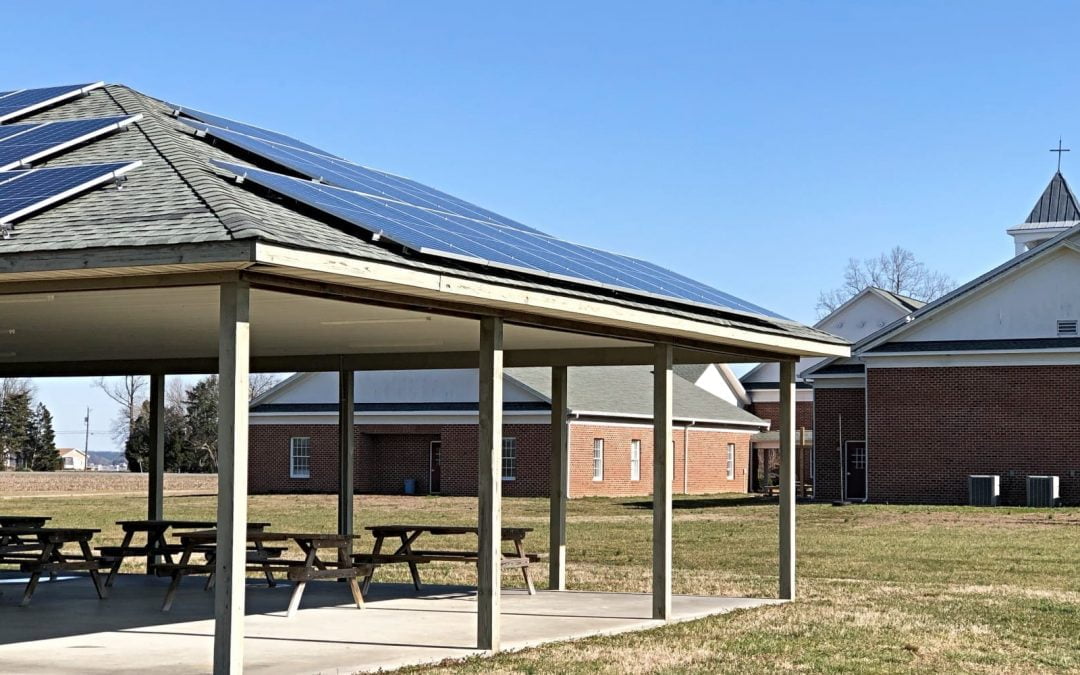The year was 1969, and Roger Waters was on the Mediterranean island of Ibiza, 49 miles off the coast of Spain.
The sky was blue, the water was crystal-clear, and the sun’s heat reflected off the sand. The lush green vegetation that covered the island added to the paradise scene, and Waters was inspired to write a song.
His band Pink Floyd recorded the song in London later that year for the album “Soundtrack from the Film More.”
The lyrics of the third verse read: “Green is the colour of her kind / Quickness of the eye deceives the mind / Many is the bond between the hopeful and the damned.”
The last line, “many is the bond between the hopeful and the damned,” could very well be a prophetic proclamation concerning the tension between humans and the environment.
An interesting question to consider in terms of ecology is this: Who are the hopeful and who are the damned?
The title of the song also speaks to our current context in many ways. Green is the color – the color of the emerging economy, the color of sustainability, the color of conscientious capitalism and the color of political buzzwords.
Society seems green with environmental concern, and the church needs a practical response.
Individual Christians, however, face several challenges concerning consumption. In the U.S. economy, one’s loyalty to capitalism may inherently come into conflict with one’s loyalty to God.
In all fairness, the same is true of a Christian Communist or Marxist. All social systems place demands morally and economically on their adherents and may come into conflict with faith daily.
We must find ways to meet the challenges our social system presents to faithful discipleship.
In her book, “Blessed Are the Consumers: Climate Change and the Practice of Restraint,” environmental theologian Sally McFague writes, “as we do these things, a narrative emerges in which words like restraint, sharing, limits, boundaries are central, and words like limitless, expansion, growth, development, which have ruled our personal, political and market lives for centuries, move to the margins.”
Part of a minister’s task in a local church setting is then to invite people toward a new understanding of creation stewardship.
If your church is like mine, many people appear to be in total denial of environmental change. The issue is highly politicized, and to some, global warming and environmentalism seem like left-wing political agendas.
Change of any kind does not come without political will. Part of the hesitancy of many to embrace environmentally friendly practices stems from political leanings, but hesitancy also stems from a deep-seated distrust of the academy.
If the same scientists that believe in evolution believe in global warming, the biblical literalist wants nothing to do with it.
As many studies have shown, “the religious right and transnational corporations, […] each have vested interests in scientific outcomes,” and both act as major players in the distrust some people have in science.
Any plan for bringing environmental ethics into the local church needs to acknowledge these hurdles and find a way to depoliticize certain issues at play.
In fact, pastors should be aware that “trust in science has not declined since the 1970s except among conservatives and those who frequently attend church,” asserted Gordon Gauchat in his 2012 American Sociological Review article, “Politicization of Science in the Public Sphere.”
This piece of knowledge deserves careful consideration because many churches are politically diverse, and all healthy churches are full of frequent attendees.
Many people in our churches will have a difficult time considering theology in terms of environmentalism because of their politics or because of their suspicion of science. That is the inconvenient truth of environmental ethics in the local church.
When I came to Beale Memorial Baptist Church in Tappahannock, Virginia, many denominational leaders told me what a great church it was, and how the congregation was full of good leaders.
By the end of my first year as the church’s pastor, I began to understand what they meant.
In the middle of a sermon series focusing on cultural change and how the church can faithfully respond, I preached a sermon on the trend of “going green.”
After noting that companies, philanthropists and even governments are taking the lead on cleaner energy, on sustainable agriculture, on renewable energy and on caring for creation, I posed two questions to my church:
- What is the church’s role in all this?
- If care for creation is a high value in our culture, and care for creation is a biblical mandate, why is the church not leading this conversation?
In his first letter to the church at Corinth, Paul uses the reader’s understanding of and love for nature to tell the gospel.
By appealing to the inherent and lasting beauty of the sun, moon and stars, Paul uses dualism in nature to explain the dualism of body and spirit as it pertains to the resurrection.
He writes, “There is one glory of the sun, and another glory of the moon, and another glory of the stars; indeed, star differs from star in glory” (1 Corinthians 15:41).
Through appealing to the natural order and beauty embedded in creation, Paul makes appeals concerning everything from church health issues to daily life in Corinthian households.
The apostle uses nature to appeal to pagans in other contexts, making such appeals in Acts 14 and 17, Romans 1 and 1 Timothy 4:3-4.
In an increasingly pagan culture where people find spirituality in nature itself, appealing to people’s sense of connection to and responsibility for nature may be one of the best evangelism tools the church possesses in the 21st century.
Do we care enough about creation that we could lead someone to Christ by using creation as an example of God’s redemptive work? How can our level of care for creation serve as a witness to the world of God’s goodness, grace and glory?
After posing these questions to my congregation that day, one of my deacons came forward and shared that the Lord had laid it on his heart to help the church adopt a solar energy plan, and that he wanted to donate solar panels in honor of his deceased mother, a beloved church matriarch.
God had been working in this man’s heart for some time, and thankfully, my feeble attempt at preaching was perhaps a catalyst in him stepping out on faith.
When telling the story concerning why he wanted to donate solar energy panels to the church, he talked about how his mother was always an early adopter of technology, and how she would be proud of the church adopting solar energy. The vote, of course, was unanimous, and rightfully so.
Since our church has installed solar panels, people are asking other questions about environmental stewardship.
Our properties committee has switched all fluorescent and incandescent bulbs to LEDs; our kitchen committee has committed to phasing out plastic-foam plates and cups; our Cub Scout pack is learning to garden organically.
Part of the motivation to adopt solar energy is financial, to be sure. Every penny we save on electricity, we can use for funding more missional aspects of our ministry.
Part of the motivation to adopt better environmental stewardship practices is the mandates in Scripture to care for God’s creation.
I hope, too, that part of our church’s motivation is increasingly that we see our environmental stewardship as a vehicle for sharing the gospel and a way to fulfil the two great commandments.
Jenny M. Seifert and Bret R. Shaw write about local churches “tending our patch of creation” in their book by the same title.
When creation care becomes localized in different ways, and when people take ownership over things they can control regarding environmental stewardship, then politics and suspicion of science are almost completely removed from the equation.
Beginning to overcome challenges in adopting a churchwide environmental stewardship strategy gives this pastor hope.
I believe also that it creates a sense of hope in our congregation, and even in the broader community – hope for a better future, hope of revitalization, hope for greater Kingdom impact, hope for new life.
Sounds like Easter to me.
Editor’s note: This article is part of a series for Earth Day 2019 (April 22). The previous articles in the series are:
Your Responsibility to Love the Earth as Your Neighbor by Jeff Lee
The Only Hope Left to Thwart Climate-Change Disaster by Rick Burnette
5 Practical Measures to Turn Around Our Declining Environment by Sam Harrell
4 Solutions Christians Can Offer to Ease Climate-Change Crisis by Beth Allison-Glenny
Jonathan Davis pastors Beale Memorial Baptist Church in Tappahannock, Virginia. He holds a D.Min. from Logdson Seminary, where his studies focused on helping rural churches thrive in the midst of 21st Century change. Jonathan is the founder of the Small-Town Churches Network where he shares research and ideas to help rural churches and clergy thrive. He also serves on the Coordinating Counsel for CBF Virginia, and on the Mission Counsel for the Baptist General Association of Virginia.


